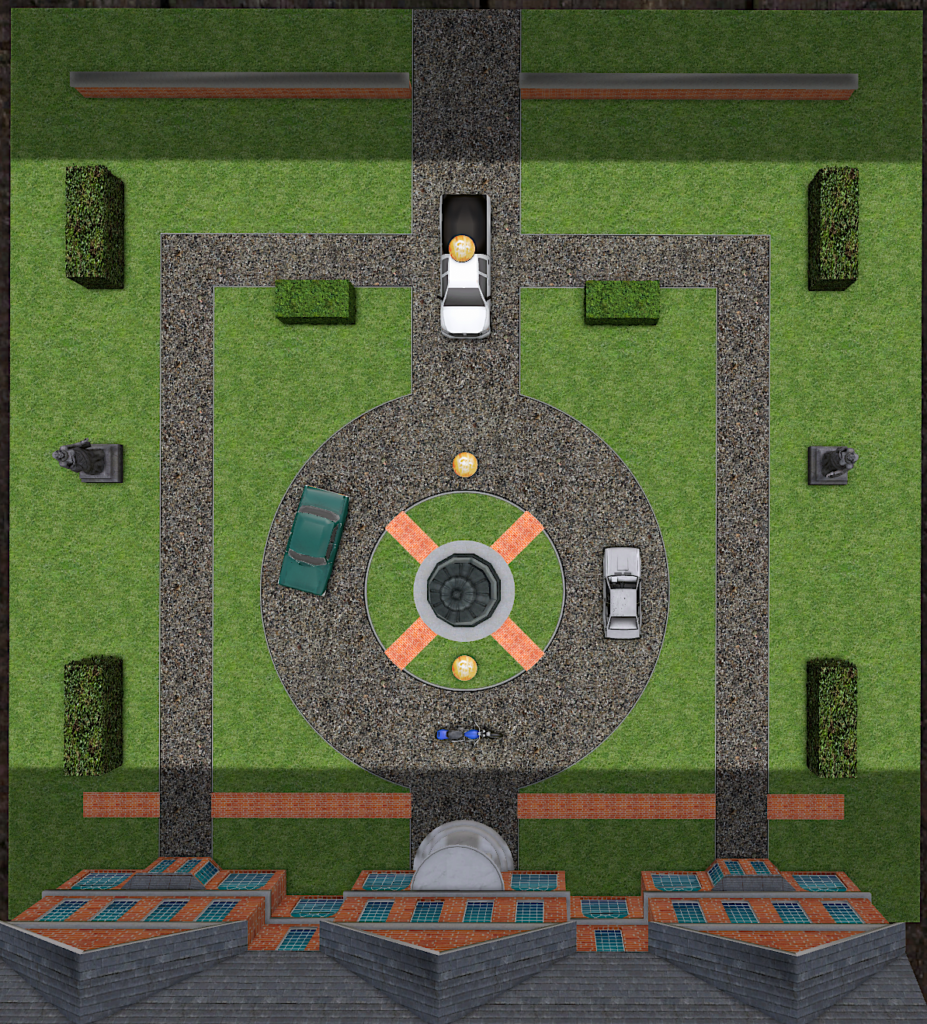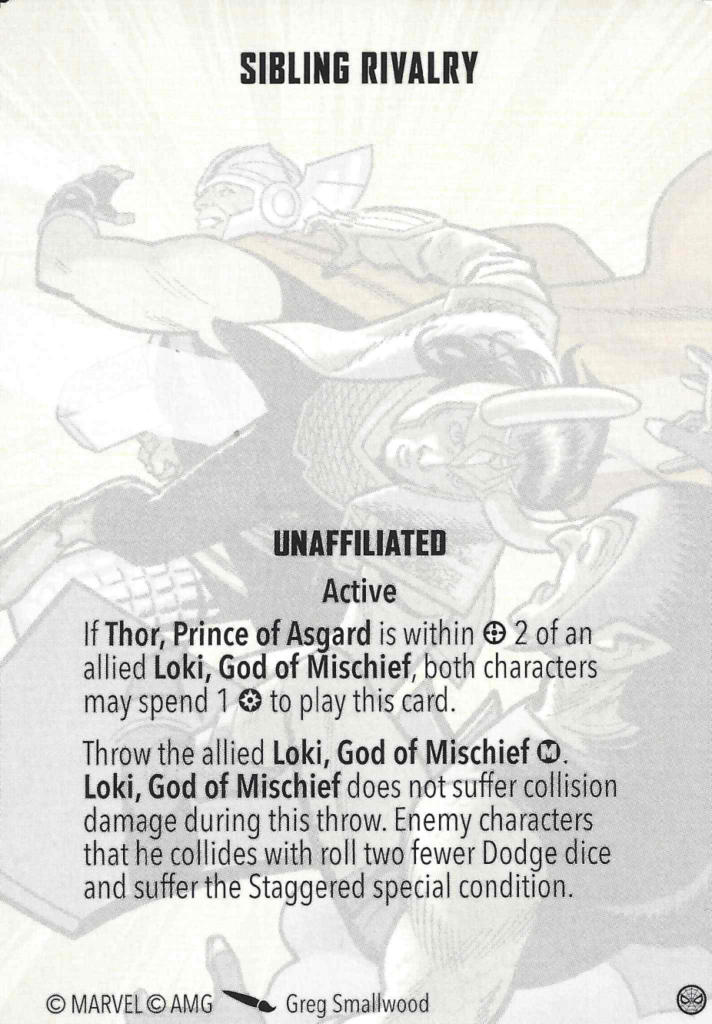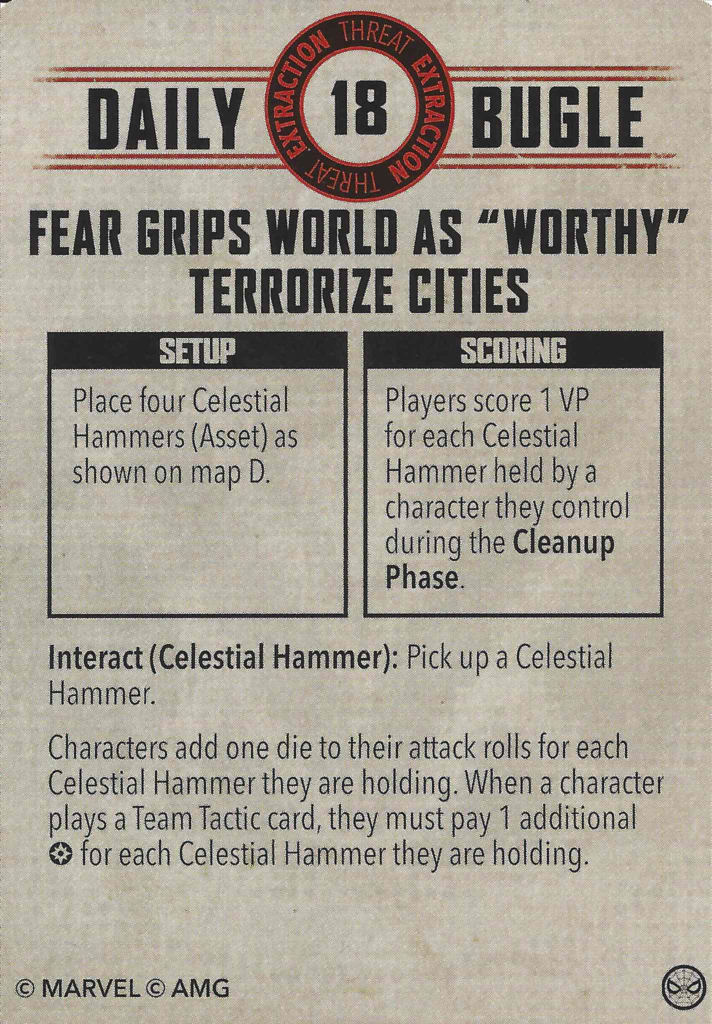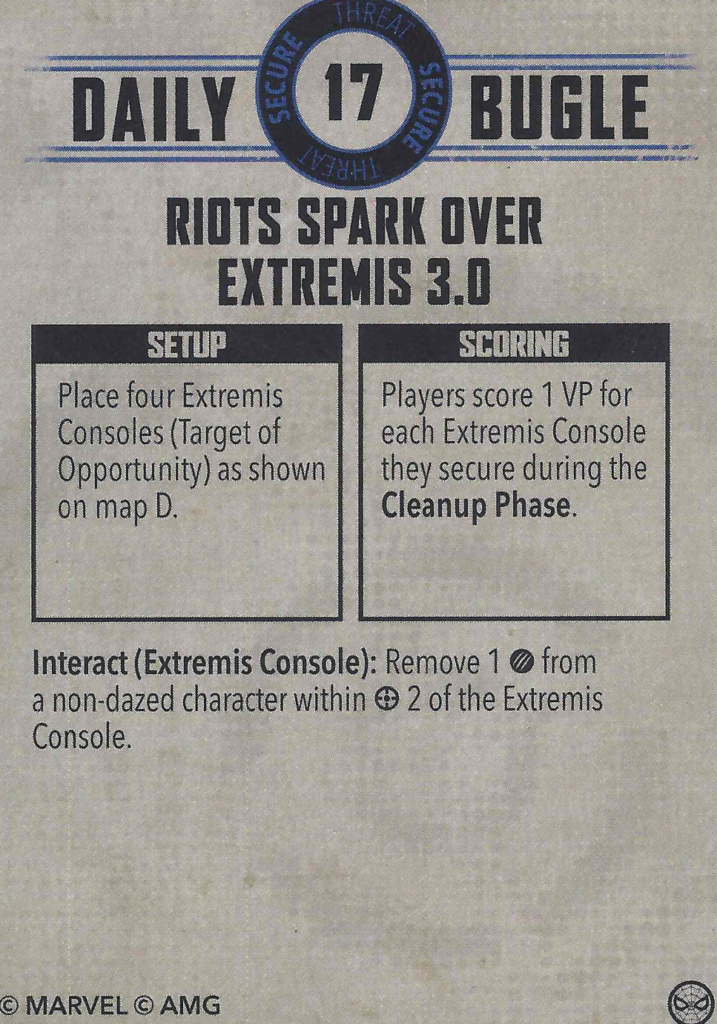
Hey there! Back at it again, this time with some deployment specific tips & tricks to give you another feather in your cap to be more prepared than your opponent before the match starts. I’ve seen a lot of people who don’t put enough thought into their initial deployment, hurting their round 1 opener and setting them at a disadvantage for the rest of the game. Sometimes its the ordering of your characters, sometimes its placement but consistently it comes back to not understanding the natural consequences of the choices. By the time this article is through, you’ll know what to look for when putting your minis down.
Rotating the Board
This is something that I don’t see enough from players that lose the roll off. If you have the power to choose the board edges, put some serious thought into it, not all board edges are equal. For our first example, let’s look at the current TTS map on an E secure setup:

Which side should you take? Realistically, that depends on your goals. The bottom edge has a LOS denying size 3 piece in front of the home secure while the truck on the secure, requiring you to climb on top and awkwardly stand next to it.
That said, maybe if you go for the fountain side the terrain is a liability – now there’s a size 3 piece right in front of your most delicate character just waiting to be thrown at them. And its a lot more accessible being a couple inches closer to the center than the truck.
Or perhaps you’re playing a throw heavy team like Brotherhood and want easy access to the terrain regardless of where you are, and rotate the map 90 degrees so no matter where you place Magneto and friends they can easily toss around all of the vehicles and fountains.

Here’s another interesting case study, if you notice you can put a terrain piece perfectly such that it lines up with the home secure. This doesn’t necessarily matter for a lot of openers, but for M.O.D.O.K. it would prevent him from grabbing a hammer before moving, and can make Red Skull’s placement effect on him have less optimal positioning onto the front side of their home D/E secure and potentially give an out for standing on the middle without being threatened by him.
On the flip side, the size 4 truck in the middle makes it way easier for the top side to hold the center out of line of sight of the long range characters that like to hold a home objective like Shuri or M.O.D.O.K. – it also opens up a lot of exciting options for teams capable of throwing size 4 terrain like Brotherhood or Asgard.
Knowing how to spot inequalities between board edges and maximizing your advantages is vital. You can create key pockets to hide in while scoring, screw up your opponents deployment, and place key terrain pieces EXACTLY where you want your throwing characters to go. If you leave that on the table (pun intended) you’re giving up a key advantage given to you to make up for your opponent having priority and choosing which half of the crisis to contribute / deciding threat. Always make sure to take a critical eye to the board before selecting table edges.
Understanding the Shape of Things
The next elementary concept is understanding the crisis shape and the areas you’re expected to fight over. To start, let’s go over a simple example:
Both halves of the crisis are D shaped so your game plan should be pretty straightforward. There’s essentially two main ways to play this – fight for both sides or take one side and go for a 2-2 split with your opponent.
The 2-2 split variation is favorable for teams that have good ways to break the split, like Black Order with Thanos’ leadership to eke out a small edge, Brotherhood can Deception a lone character off of the extremis console at the end of a round to take a point away / threaten to steal the hammer if they’re holding it. This can be a bit fragile though because if your opponent is better at breaking the symmetry than you, you’re going to have a hard time.
Trying to go for full control of the flanks is the other common alternative. This is typically the most attractive for teams that can play 5 characters wide, with a cheap character / one that can support over long range holding your home secure, while 2 teams of 2 characters go to fight for each of the flanks.
Now, that’s not to say there’s not more complicated variations. Brotherhood teams led by Mystique can secure objectives and move on, threatening your opponents secures with their full forces, and the only way to take their held points back is to run through them. Criminal Syndicate with a long mover or someone with some movement tricks can force your opponent to put 2 characters on their home secure otherwise you run all the way onto their home secure with the last activation of the round to steal it out from under them. Hell, you can even do that without Kingpin’s leadership if you’re a lock for having round 2 priority and attempt to daze their home secure holder top of round 2 and force your opponent to reroute pieces from the sides back home.
And beyond a double D shape, there are a ton of possibilities for extract + crisis shape combinations. The important thing though is deploy to pick up your extracts early, while still scoring all of your secures from round 1. On Panic Grips City + Gamma Wave, its important to deploy to pick up both of your citizens while moving in to at least shelter range to avoid damage, if you have long movers or mobility tricks try to actually hold the shelters. An easy exercise is to set up a crisis combination and see how you can single/double move characters to get extracts and hold all the secures on your half of the map / fight for the ones on the center line.
Order in the Court!
Deployment order is a deceptively important concept to understand. Each time you put a piece down you are giving information to your opponent about what you plan to do and how you plan to play the game. If your first deployment is putting Thor on a flank, and you have Sibling Rivalry in your Tactics cards, you’re basically screaming at your opponent that Loki will be deployed with him.

Every deployment opens up opportunities to counter-deploy. Your opponent can rise to the challenge and put their counter-pieces lined up with your opening move, or cede that flank entirely if they don’t want to deal with it. An early Shuri deployment is something I always love to see because I can then plan my deployment to minimize her impact round 1.
How to limit counter-deployment you ask? The first thing is to acknowledge obvious deployments that always happen. If you’re on a D shape, you need someone to hold the home point, and will almost always have to be a long range character to be relevant while still securing. Most teams will have exactly one character for that role so deploying them first basically gives no information to your opponent and gives them an opportunity to give you information to plan your next moves. Once your opponent begins to commit to a flank, you can start making your deployments purely in response to your opponents deployment and give them nothing to work with. Having more characters in your team than your opponent is very helpful for this as it guarantees you the final deployment(s).
Conclusion
Hopefully this is a quick introductory crash course in a few basic questions you should ask yourself during deployment. Knowing which board edge you should play with, how to deploy to the shape of the crisis, and in which order you place your characters can limit your opponents ability to get an advantage before dice have been rolled, and even give you a not insignificant leg up with superior deployment than your opponents.
If you have any topics you’d like to see covered / covered more deeply, leave a comment below or on the Roster Doctor Facebook page at https://www.facebook.com/rosterdoctor
I’m also starting up doing streams at https://www.twitch.tv/rosterdoctor evenings and weekends PST whenever I get pickup games, and vods will be posted on the Roster Doctor Youtube Channel here:
https://www.youtube.com/channel/UCMV9KCeSDSpNUmzJ1msnkIw
(looking to get to 100 subscribers on youtube so I can make that url less ugly).




